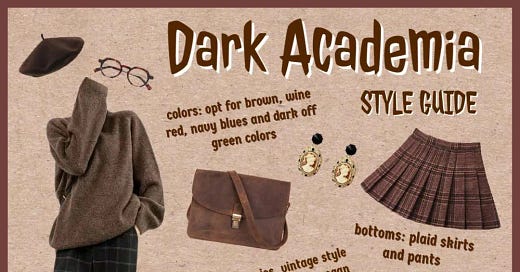As someone who is terminally online and has an unfortunate online window-shopping addiction, I have been often forced to evaluate my desires and obsessions, but these have just been limited to signing our off Amazon or joining de-influencing subreddits. The below essay, written as part of an elective, is an attempt to put that evaluation to paper.
Please do read and others on the substack, ‘Fruits of Our Labour.’ Bricks and bouquets as always, welcome.
Sometime in high school, I signed up on Pinterest. It was a revelation. It was social media without the social, Instagram without the anxiety-inducing, insecurity-increasing elements. As column after column of images unfolded in front of me, it became apparent that there was an unravelling of an internet culture. Images were tagged as belonging to certain ‘aesthetics’ like light/dark academia, royal-core, cottage-core. This wasn’t exclusive to Pinterest. YouTube channels teach you how to make your room look more ‘coded’ in a certain aesthetic. You, gentle reader, may belong to any aesthetic style, from ‘Y2K’ to ‘Quiet Luxury.’
An ‘aesthetic’, as in a visual culture, being central to an identity is not a new phenomenon. In the 1970s, punk culture was predominated by mohawks and piercings. The rise of internet aesthetics can be traced back to Tumblr in the early 2010s. The pandemic, however, was the critical moment. A terminally online generation had fixated en masse with these aesthetics. Ever since they flooded our phone screens, aesthetic culture has been the subject of much cultural commentary. Commentators have criticised it for promoting overconsumption, over-categorisation and as yet another iteration of beauty standards in a more benign packaging.
This piece is not hate mail for Gen Z. The internet grew up with my generation. I see it as both entrapment and salvation and I believe that aesthetic culture is no different. I have participated in it enthusiastically. I have picked out pastel colour gifts for my friend because I thought she “gave off a very cottagecore vibe”, wore neutral shades in an attempt at ‘academia’ aesthetic. This essay is thus, more of a personal reflection, informed by scholarship and an invitation to think about the possibilities of community building and constructions of the self.



